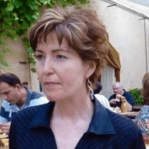
The profound impacts of ‘hidden’ power and influence – sometimes exercised by private-sector actors or traditional leaders through decisions made in private or through proxies –demonstrates why it’s important to understand who holds power in a community before addressing biodiversity loss and rural development.
Such knowledge can support work to reconcile multiple demands on resources or control of a landscape, as well as in decision-making, according to new research from southern Zambia. This work is especially thorny when reconciling conflicting demands for conservation and development among actors with varying amounts of power, authority and influence, says PhD candidate Freddie Sayi Siangulube, lead author of “Navigating power imbalances in landscape governance: a network and influence analysis in southern Zambia”, recently published in Regional Environmental Change.
Power imbalances are often the product of actors’ social belongingness, situatedness, and settlement histories, says Siangulube. “All actors exercise some form of visible, hidden, or invisible power in different social spaces to influence decision-making or negotiate a new social order,” he adds.
Recognising forms and use of power, and actors’ interactions in decision-making processes, is an important step towards addressing why power imbalances persist and, ultimately, transitioning towards more inclusive and equitable landscape governance.
Those are crucial issues in Southern Zambia’s Kalomo District, which is home to the 16,200-hectare Kalomo Hills Local Forest Reserve, surrounded by agricultural and livestock farming, the Nazhila water catchment, the Sichifulo Game Management Area as well as several surrounding villages in the Chikanta Chiefdom.
The study is based on three main types of power – visible, hidden, and invisible – operating in three sorts of power “spaces” – closed, invited, claimed – and across local, national, and global levels. Visible power can be observed as it’s exercised through decision-making based on rules and structures.
Hidden power may be applied by traditional leaders, private-sector actors, and government agencies. For example, a villager cited by the paper complained that the council of elders and village head person were “manipulative” in decision-making because the magnitude of key issues was either played down or even excluded from public discussions. In another example, the topic of grazing land and sacred groves was cited by another villager who complained that village elders invoked “respect for traditional norms” as a cover for private decision-making. These comments came during surveys conducted from July 2019 to October 2020 as part of the COLANDS initiative. Collaborating to Operationalise Landscape Approaches for Nature, Development and Sustainability (COLANDS) is led by the Center for International Forestry Research-World Agroforestry (CIFOR-ICRAF).
Private-sector actors hide their power in many ways: one obvious example is “divide and rule” or promoting conflicts in an area through donations, corruption, isolation, or lobbying for support.
One respondent said that some private-sector agribusinesses avoid participation in public meetings so they can’t be bound by collective decisions, while quietly using influential community members as their proxies. Powerful illegal timber and charcoal traders benefit from governance disagreements between local communities and higher levels of government, said a government respondent.
Recurring tensions in natural resource governance is a significant problem, pitting actors with visible power (the Chief and government agencies) and hidden power (local level forums and landholders) against local land users (sometimes resisting power).
These tensions can hamper efforts to implement integrated landscape approaches (ILA) that aim to create momentum to break silos and embark on multi-stakeholder platforms and other negotiation forums to address trade-offs among various interest groups or different land uses.
“Yet, integrated landscape approaches are valuable in such settings because they aim to bring together stakeholders in new social spaces that exist beyond where an individual ‘belongs’ – ethnic affiliations, gender, age, wealth – to achieve ‘win more-lose less’ outcomes,” says Siangulube.
“This is not easy to achieve, but the dialogue envisaged by ILAs, in principle, offers the latitude for competing actors to seek clarity on their rights and responsibilities,” he says.
That is particularly relevant for women and youth, who often depend on covert action to have their opinions considered in decision-making processes. “ILAs offer the potential to balance diverging power positions, ensuring fair participation of women, youths, and other less influential stakeholders in dialogue-focused processes.”
The findings, based on research including surveys and interviews, have wider relevance beyond Zambia as the approaches to understand power dynamics in contested landscapes are applicable across the tropics where mixed statutory and customary governance arrangements prevail.
Power imbalances in natural resource governance remain a significant stumbling block to equitable and inclusive landscape governance, says the paper. But that can be confronted through ILAs, including developing tools to monitor power imbalances and their impacts.
COLANDS is part of the International Climate Initiative (IKI) and is funded by the German Federal Ministry for the Environment, Nature Conservation and Nuclear Safety (BMU).
PhD research that is part of COLANDS is hosted at the Institute for Social Science Research of the University of Amsterdam and the University of British Columbia.
For more information on this topic, please contact James Reed at j.reed@cifor-icraf.org
We want you to share Forests News content, which is licensed under Creative Commons Attribution-NonCommercial-ShareAlike 4.0 International (CC BY-NC-SA 4.0). This means you are free to redistribute our material for non-commercial purposes. All we ask is that you give Forests News appropriate credit and link to the original Forests News content, indicate if changes were made, and distribute your contributions under the same Creative Commons license. You must notify Forests News if you repost, reprint or reuse our materials by contacting forestsnews@cifor-icraf.org.












